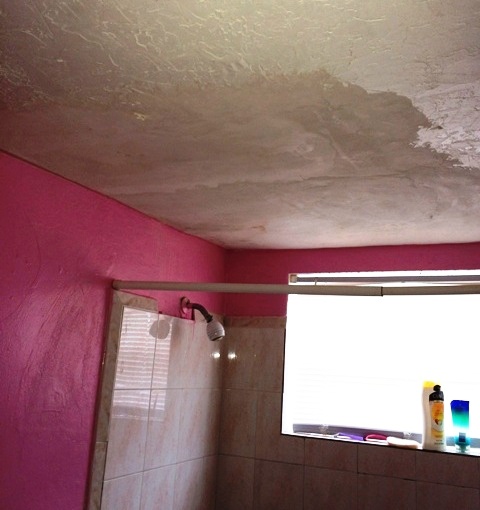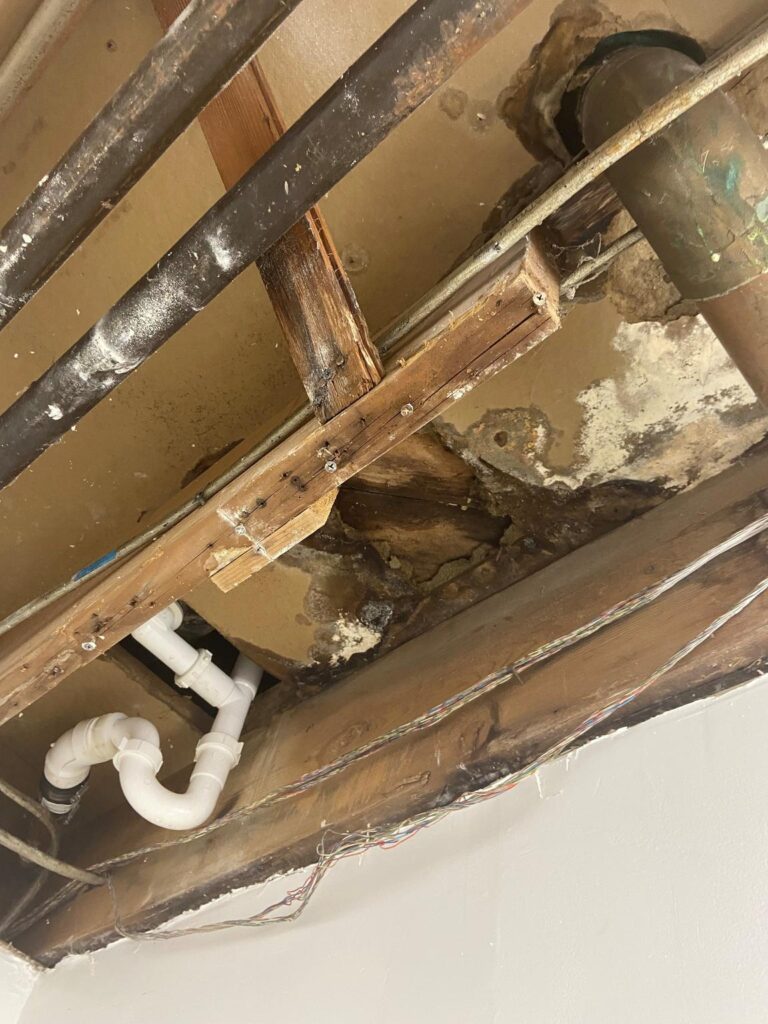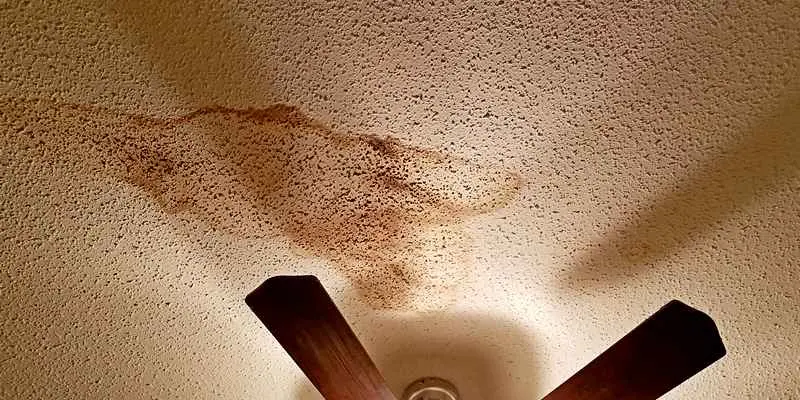In the realm of building maintenance and safety, it is crucial to understand the factors affecting mold growth stemming from a leaking roof. This article aims to investigate the timeliness of mold growth under such circumstances. By analyzing existing research and case studies, we will uncover the speed at which mold infestations can develop when a roof is compromised, shedding light on the urgency with which such issues should be addressed. Additionally, we will explore the potential risks associated with mold growth to emphasize the critical need for timely and effective remediation measures.
Factors Affecting Mold Growth
Mold growth can be influenced by various factors, including moisture level, temperature, nutrient availability, and the type of roofing material. Understanding these factors is crucial in preventing and remedying mold issues effectively.
Moisture Level
One of the most critical factors in mold growth is the moisture level. Mold requires moisture to thrive, making it vital to control humidity levels and address any water intrusion or leaks promptly.
Level of Moisture Intrusion
The extent of moisture intrusion plays a significant role in mold growth. If water infiltrates your roof extensively, it can seep into the building’s interior, providing an ideal breeding ground for mold. The higher the level of moisture intrusion, the greater the risk of mold development.
Extent and Duration of Roof Leaks
Roof leaks, if left unaddressed, can lead to mold growth. The extent and duration of these leaks determine the severity of the mold problem. Even small leaks over an extended period can result in significant mold infestation.
Indoor Humidity
Indoor humidity levels directly impact mold growth. High humidity creates a favorable environment for mold spores to thrive. Proper ventilation and moisture control measures are essential in maintaining optimal indoor humidity levels and preventing mold growth.
Temperature
Temperature is another factor that affects mold growth. Mold has specific temperature preferences and reacts differently to temperature fluctuations.
Optimal Temperature for Mold Growth
Mold tends to thrive in temperatures between 77°F (25°C) and 86°F (30°C). However, it can still grow in colder or hotter conditions, albeit at a slower pace. Understanding the optimal temperature range for mold growth helps assess the severity of a mold problem.
Temperature Fluctuations
Significant temperature fluctuations can also impact mold growth. Rapid changes in temperature can stimulate mold spores, causing them to multiply at a faster rate. Consistent temperature control is necessary to minimize mold growth potential.
Relative Humidity
Temperature and humidity are closely linked. High relative humidity, in combination with warm temperatures, provides an ideal environment for mold growth. Managing relative humidity levels is crucial in preventing moisture accumulation and subsequent mold growth.
Nutrient Availability
Mold requires organic materials to sustain its growth. Roofing structures offer potential sources of nutrients for mold, along with other external factors.
Organic Materials in Roofing Structure
Certain roofing materials contain organic components, such as wood or cellulose-based materials, which can serve as food sources for mold. Mold can penetrate and feed off these organic materials, leading to its proliferation.
Dust and Debris Accumulation
Accumulated dust and debris on roofs can provide additional nutrients for mold growth. This debris can contain organic matter, such as decaying leaves or plant matter, facilitating mold infestation.
Presence of Other Mold-infested Areas
If there are existing mold-infested areas in your building, they can contribute to the spreading of mold spores to the roofing structure. Mold can easily travel through the air and settle on the roof, increasing the risk of mold growth.
Type of Roofing Material
The type of roofing material used can impact mold growth potential. Some materials are more absorbent than others, increasing vulnerability to moisture damage and mold infestation.
Absorbent Materials
Certain roofing materials, such as wood or cellulose-based shingles, are more prone to absorbing moisture, providing an ideal breeding ground for mold. Regular inspections and prompt repairs are crucial when using absorbent materials to prevent moisture-related issues.
Non-absorbent Materials
Materials like metal or slate are less prone to moisture absorption, limiting the potential for mold growth. However, even non-absorbent materials are still susceptible to mold if other factors, such as leaks or high humidity, come into play.
Vulnerability to Moisture Damage
Roofing materials that are more susceptible to moisture damage, such as asphalt shingles, are at a higher risk of facilitating mold growth. Damaged or deteriorating roofing materials can accumulate moisture, creating an environment conducive to mold infestation.

This image is property of www.black-mold-guide.com.
Typical Timelines for Mold Growth
Knowing the typical timelines for mold growth can help you assess the urgency of addressing water intrusion or leaks from a leaking roof. Mold growth can progress rapidly under favorable conditions.
24-48 Hours
Within 24-48 hours of water intrusion, mold spores can begin to settle and colonize. Microscopic mold growth may start developing on surfaces with high moisture content.
2-5 Days
If the water intrusion or roof leak remains unaddressed for 2-5 days, mold growth becomes more evident. Visible signs, such as discoloration or localized mold patches, may become apparent on affected surfaces.
1-2 Weeks
After 1-2 weeks, mold colonies can expand further, covering larger areas. The mold may become more pronounced, emitting a musty odor characteristic of mold infestation.
2-3 Weeks
If the source of moisture remains unresolved for 2-3 weeks, mold growth can become extensive. It can spread to adjacent areas, affecting a larger portion of the roof and potentially infiltrating the building’s interior.
3+ Weeks
Protracted periods of moisture intrusion exceeding three weeks significantly increase the severity and scope of mold growth. Mold can infiltrate multiple levels of the building, including walls, ceilings, and other structural components.

This image is property of www.htmlcommentbox.com.
Signs of Mold Growth
Identifying the signs of mold growth is crucial for early detection and remediation. Prompt action can prevent further damage and potential health risks.
Visible Mold
Visible mold growth is an obvious sign of mold infestation. It can appear as fuzzy patches, discoloration, or black spots on various surfaces, including the roof, walls, or ceilings.
Musty Odor
The presence of a musty, dank odor is often an indication of mold growth. When mold colonies produce spores and mycotoxins, they release volatile organic compounds (VOCs) that can emit an unpleasant smell.
Allergic Reactions
Mold can trigger allergic reactions in some individuals. Symptoms may include nasal congestion, sneezing, coughing, itchy or watery eyes, and skin irritation. If these symptoms occur consistently when within a certain environment, mold exposure may be the cause.
Water Stains on Ceiling or Walls
Water stains or discoloration on the ceiling or walls can be a sign of ongoing water intrusion and potential mold growth. These stains indicate previous or current leaks, which can provide the moisture necessary for mold to thrive.

This image is property of www.environix.com.
Health Risks of Mold Exposure
Exposure to mold can pose significant health risks, particularly for individuals with compromised immune systems, respiratory conditions, or allergies. It is crucial to address mold issues promptly to protect the health and well-being of occupants.
Respiratory Problems
Inhaling mold spores or their byproducts can lead to respiratory problems, especially in individuals with pre-existing lung conditions like asthma or chronic obstructive pulmonary disease (COPD). Mold exposure can exacerbate symptoms, causing coughing, wheezing, chest tightness, or difficulty breathing.
Allergic Reactions
Mold is a common allergen that can trigger allergic reactions in susceptible individuals. Symptoms can range from mild to severe, including sneezing, nasal congestion, runny nose, itchy or watery eyes, and skin rashes.
Headaches and Fatigue
Prolonged exposure to mold can cause persistent headaches and fatigue. These symptoms may result from the body’s immune response to mold toxins or the overall physiological stress caused by mold exposure.
Skin and Eye Irritation
Direct contact with mold or its spores can cause skin irritation, such as redness, itchiness, or rashes. Additionally, exposure to mold spores in the air can cause eye irritation, including redness, itching, or watery eyes.

This image is property of www.environix.com.
Preventing Mold Growth
Preventing mold growth starts with addressing potential sources of moisture and implementing proper preventative measures. Proactive steps can significantly reduce the risk of mold infestation.
Fixing Roof Leaks Promptly
Promptly repairing roof leaks is fundamental in preventing moisture intrusion and subsequent mold growth. Regular inspections and maintenance help identify and address potential issues before they escalate.
Proper Ventilation
Proper ventilation plays a crucial role in preventing moisture buildup. Properly functioning ventilation systems help regulate indoor humidity levels and prevent condensation, reducing the likelihood of mold growth.
Controlling Indoor Humidity
Maintaining optimal indoor humidity levels can effectively inhibit mold growth. Using dehumidifiers, ensuring proper airflow, and promptly addressing any sources of excess moisture are vital in controlling humidity.
Regular Roof Inspections
Regular roof inspections, conducted by trained professionals, can identify potential areas of concern before they lead to significant water intrusion or mold growth. Professional inspections help ensure proactive maintenance and timely repairs.

This image is property of b1788602.smushcdn.com.
Professional Mold Remediation
In cases where mold growth has already occurred, professional mold remediation services may be necessary. Mold remediation experts employ specific techniques to assess, contain, remove, and prevent future mold growth.
Assessment and Testing
Experienced mold remediation professionals conduct comprehensive assessments to determine the extent of mold growth and identify its source. They may perform air quality testing and surface sampling to assess the mold spore concentration and identify the type of mold involved.
Containment and Removal
To prevent cross-contamination and further spread of mold spores, the affected area is contained during the remediation process. Mold remediation technicians use specialized equipment and procedures to remove mold colonies and ensure thorough cleaning.
Cleaning and Disinfection
After mold removal, affected surfaces are thoroughly cleaned and disinfected to eliminate any remaining mold spores. This step helps prevent mold regrowth and ensures a safe and healthy environment.
Preventing Future Mold Growth
Professional mold remediation includes addressing the root cause of mold growth and implementing preventative measures to reduce the likelihood of future infestations. Experts may provide recommendations for ongoing maintenance, moisture control, and ventilation improvements.
In conclusion, mold growth from a leaking roof can occur rapidly, given the right conditions. Moisture level, temperature, nutrient availability, and the type of roofing material are significant factors affecting mold growth. Recognizing the signs of mold growth and the associated health risks is crucial in addressing mold issues promptly. Preventative measures, such as fixing roof leaks, proper ventilation, humidity control, and regular inspections, can help prevent mold growth. In cases where mold growth has already occurred, professional mold remediation services offer thorough assessment, containment, removal, cleaning, disinfection, and preventative measures to combat mold infestation effectively. By understanding the factors influencing mold growth and taking appropriate action, you can ensure a safe and healthy environment for all occupants.
